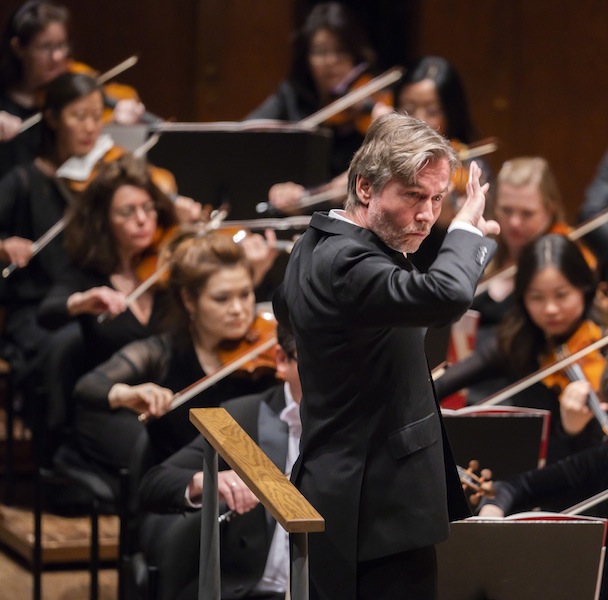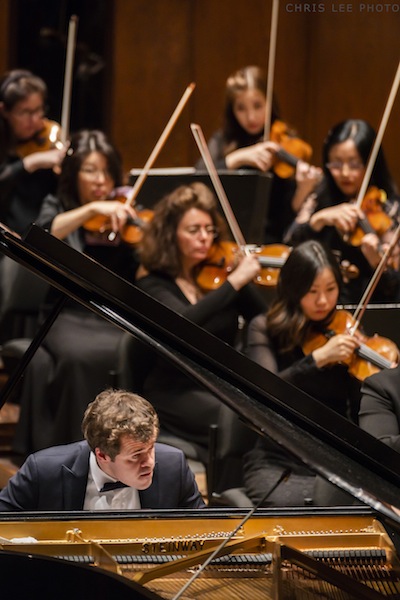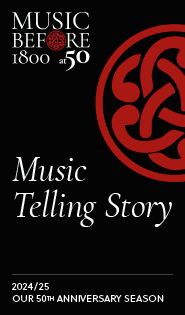Thorvaldsdottir premiere, Grosvenor debut ignite Salonen’s Philharmonic program

Esa-Pekka Salonen conducted the New York Philharmonic in the world premiere of “Metacosmos” by Anna Thorvaldsdottir Wednesday night at David Geffen Hall. Photo: Chris Lee
For a memorable night at the New York Philharmonic, there’s nothing like a spectacular world premiere or a dazzling debut. Exceptionally, Wednesday’s concert led by Esa-Pekka Salonen had both.
Opening the program, Icelandic composer Anna Thorvaldsdottir’s Metacosmos made a powerful impression in its debut performance, evoking an enormous vista of space and time in a 12-minute span with broad, artfully blended strokes of orchestral color.
Following a pause to move the furniture and roll the piano out, Benjamin Grosvenor made his Philharmonic subscription debut as soloist in a performance of Beethoven’s Piano Concerto No. 3 that will be remembered for its lapidary details and irresistible vitality.
As he often does, Salonen spoke to the audience before performing the new work, a Philharmonic commission. In this case, Thorvaldsdottir—the Philharmonic’s Kravis Emerging Composer since June 2015–joined him onstage and submitted to a few questions from him, the first of which was “What does ‘metacosmos’ mean?”
“A world beyond our world,” the composer replied. Listening to her piece, one couldn’t help thinking of the saying attributed to the scientist J.B.S Haldane, that the Universe is not only stranger than we suppose, it is stranger than we can suppose.
Certainly “unearthly” would describe the piece’s opening pages, a pianissimo throb of double basses and cellos surrounded by a nebula of rolling gong sound. A sudden loud unison note launched the listener on a space odyssey of shifting tone colors, achieved by slowly passing musical ideas from instrument to instrument, developing them as she went along.
This strange universe was illuminated by singularities in the form of rocketing woodwind scales, snapped pizzicatos, and other sudden events. A Nordic sonority of rumbling bass and gleaming brass seemed to shatter and reassemble, as if one were listening to Sibelius on a dodgy CD.
At mid-piece, a thumping motive for tuba and bass drum gradually evolved into an industrial cacophony of percussion, climaxing in a chord that seemed to break through a barrier into still another sonic world. Amid eerie string harmonics, a solo violin unfurled an endless melody, climbing high, fading in a diminuendo, and vanishing as the piece closed.
Salonen and concertmaster Frank Huang held the silence as long as they could, then yielded to the audience’s applause, which was enthusiastic enough to call the composer back to the stage for a second bow.

Benjamin Grosvenor performed Beethoven’s Piano Concerto No. 3 Wednesday night. Photo: Chris Lee
The Beethoven concerto performance opened promisingly as Salonen led the orchestral exposition with clean Classical lines and symphonic breadth. Then pianist Grosvenor took charge with fluent and articulate playing that projected to the back row in all dynamics, loud or soft. Alert to every meaningful turn in the music, the pianist also kept the long arc in view, pulling the listener with him on his journey. In particular, the composer’s extravagant first-movement solo cadenza unfolded as a drama in several acts.
Grosvenor’s clear, full tone lacked only a real singing sound on top, which would have made for more layered voicing. One especially missed that tone in the eloquent Largo movement, which the pianist played with admirable sensitivity but a rather low profile. Late in the movement, even the orchestra’s wind soloists seemed to have caught the no-sing bug.
Barely observing the rest at the end of the Largo, Grosvenor bounded immediately into the finale, and soon Salonen and the orchestra were matching him for zest, vigor, and toe-tapping rhythm. Moments of humor or suspense received their due, and then some. The scorching chromatic piano scales leading to the theme’s return were a marvel, and the athletic exuberance of the Più mosso coda capped a knockout debut for the young pianist.
Following intermission, Salonen conducted Beethoven’s Symphony No. 3 “Eroica” as though it were the Fifth—a hectic performance, that was all driving energy with little regard for expressive line or moments of reflection. The rocking rhythm of the first movement’s main theme, as simple as it sounds, is not easy to get right in performance, and it often sounded rushed or blurred in this one. Ensemble suffered, as some players seemed to be more on board with Salonen’s speedy conception than others.
The story goes that Beethoven removed the exposition repeat from the first movement, lest the whole thing go on too long, but then thought better of it and restored the repeat. In his full-speed-ahead zeal on Wednesday, Salonen took it out again, leaving the movement shorter in duration but somewhat lopsided in form.
Rhythmic instability hampered the slow movement as well, as Salonen seemed to forget that the music was not just an Adagio, but also a march. The inexorable slow tread of those dotted rhythms gave way to moony rubato, and it seemed as though no two bars were ever in quite the same tempo.
The omission of the Scherzo’s first-section repeat was Beethoven’s, not Salonen’s (and still puzzling nonetheless). The conductor kept the music fast and snappy but right in time; his high-energy approach suited this movement and the variations finale better than it did the first movement.
In the Scherzo and the fugal episodes of the finale, deft leggiero playing gave the music marvelous lift and transparency. And of course Salonen’s hard-driving interpretation paid off in the finale’s brilliant coda, with the Philharmonic players responding to the stick like champion horses down the stretch, to the audience’s delight.
The program will be repeated 7:30 p.m. Thursday and 8 p.m. Friday. nyphil.org; 212-875-5656.



Posted Apr 07, 2018 at 12:24 am by Amy
We attended Friday’s performance. I agree about the tempo of the Eroica’s 1st mvmt. It is an Allegro con brio, but it was treated more as a vivace , losing some of tthe weightiness of the form, and consequently the expression in the details. Not entirely, but too much glossing over details in service of con brio. The orchestra was on top of it, though. The ensemble was crisp. I must give Esa-Pekka Salonen credit for an extraordinary, profound reading of the 2nd mvmt. It was truly heart of the Symphony; the march built towards the spaciousness of the middle section -(that sounded as a presage to to the slow mvmt of the 9th Symphony) This